Over the past century, the popularity and prices of diamonds have soared, transforming them into symbols of luxury and sophistication. Many individuals are willing to spend a substantial amount of money on expensive diamond jewelry as a means to showcase their wealth and social status.
The high demand for diamonds, combined with their status as a symbol of prestige, has led to inflated prices. Diamond sellers are well aware of what people are willing to pay for, and they capitalize on this knowledge to maximize their profits.
Engagement rings, in particular, command top prices. Sellers understand that most individuals desire a sizable diamond ring to symbolize their commitment in a relationship. Consequently, they can apply a higher markup to these sought-after products, regardless of the actual cost.
Furthermore, well-known retailers with a strong market presence can easily justify imposing the highest markups. In such cases, customers are not only paying for the diamond jewelry itself but also for the brand name associated with it.
If you’ve ever wondered about the markup on diamonds, who determines their prices, and whether jewelers make substantial profits, this article will provide you with insights. We will delve into the details of diamond markup and explore the various options available to consumers when making a purchase.
DESIGN YOUR OWN ENGAGEMENT RING: START WITH A SETTING OR START WITH A DIAMOND. IT’S REALLY UP TO YOU!
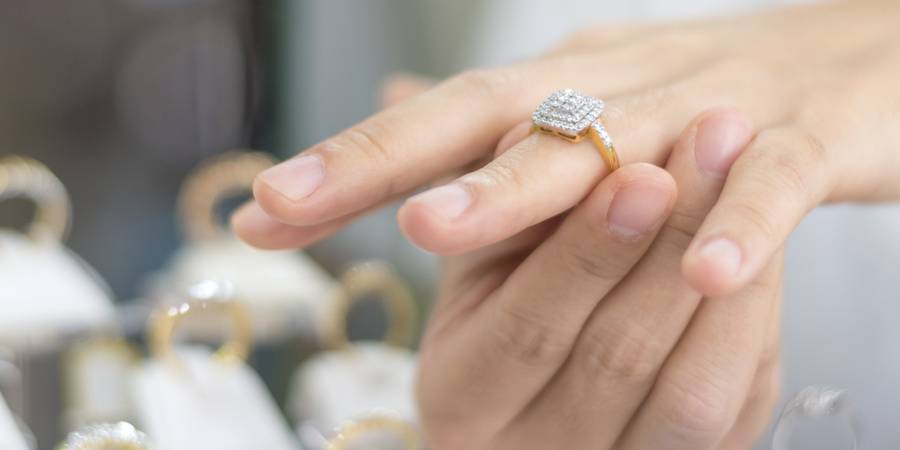
Who Controls The Price Of Diamonds?
Before delving into the topic of diamond markup, let’s first explore their pricing.
Approximately a century ago, diamonds were not as widely recognized and sought after as they are today. While it’s not entirely accurate to say that diamonds were perceived as ordinary rocks back then, it is true that they did not enjoy the same level of fame and popularity prior to the 1800s.
So, what led to the sudden surge in both the price and popularity of diamonds? The answer lies with De Beers.
In the 1880s, De Beers established a monopoly over diamonds and launched an incredibly successful marketing campaign. It was during this campaign that the iconic phrase “A diamond is forever” was coined.
At one point, De Beers controlled nearly 90% of the global diamond market. Today, their market share has reduced to around 30%, with other major players like Rio Tinto and ALROSA sharing the top positions.
These companies exert a significant influence on diamond prices. For instance, De Beers invites potential buyers (known as sightholders) to purchase their diamonds. The sightholders have the option to either accept or decline the offer. Furthermore, they must commit to not selling the diamonds below a certain price, ensuring that the prices only go up, resulting in higher markups.
So, who determines the markup on diamonds and how is it decided?
The markup on diamonds refers to the difference between the selling price and the cost of the diamond. In other words, it represents the profit made by the seller.
The markup is determined by the diamond sellers themselves, whether they are retailers, wholesalers, or online shops. Sellers need to cover their expenses and generate a profit to sustain their businesses.
However, some sellers apply exorbitantly high markups. Typically, smaller retailers maintain reasonable markups that cover their costs and allow for growth. On the other hand, larger and well-established retailers often have significantly higher markups simply because they can capitalize on the value associated with their brand.
Does the markup on diamonds fluctuate?
Yes, the markup on diamonds can vary based on demand and supply factors. Diamonds that are exceptionally rare but not widely recognized may have lower markups compared to popular and commonly found diamonds.
For example, fancy-colored diamonds like gray ones tend to have lower markups compared to traditional colorless diamonds. Additionally, engagement rings with colorless or yellow diamonds usually carry higher markups compared to those with gray or black diamonds.
However, the most noticeable fluctuations in markup occur among different sellers. The same diamond can have different prices depending on where it is purchased.
Luxury retailers and jewelers tend to have the highest markups, while smaller retailers often maintain markups that are considered reasonable and fall within the mid-range. Generally, wholesalers offer the lowest markups on diamonds.
If you want to learn more about the best places to buy diamonds based on their markup, continue reading for further insights.
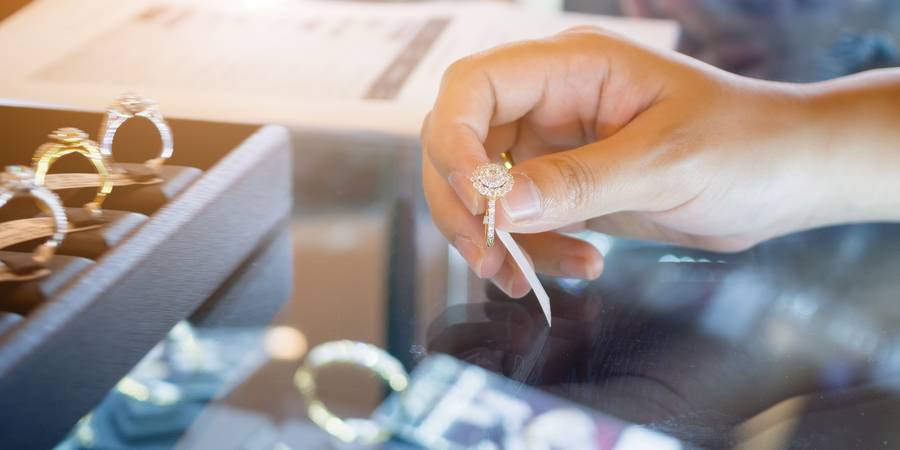
How Much Is The Average Markup On Diamonds?
The average markup on diamonds typically ranges from 160% to 300%.
This may seem excessively high, considering that diamonds are already priced higher due to their popularity as gemstones. However, when compared to the exorbitant markups of up to 1000% seen at high-end retailers and jewelers, a 300% markup appears relatively reasonable.
Retailers have various expenses to cover, including the cost of acquiring the diamond, setting it, implementing security systems, obtaining insurance, and conducting marketing campaigns. They also aim to generate a profit. However, such expenses cannot fully justify absurdly high markups. When the markup exceeds 500%, it often indicates that you’re paying for the brand rather than the intrinsic value of the diamond.
Colorless Diamonds
Colorless diamonds are the most sought-after and popular, resulting in the highest markups.
Retailers typically apply a markup of around 300%, wholesalers have markups ranging from 1% to 30%, and online stores generally have a markup of 100%. It’s important to note that these figures represent average markups on colorless diamonds.
The actual markup can vary among different sellers. Additionally, the specific diamond setting also influences the markup. An engagement ring with a diamond will typically have a higher markup compared to a diamond bracelet or earring due to the higher demand for engagement rings.
Fancy Diamonds
Fancy diamonds, despite being rarer than colorless diamonds, do not enjoy the same level of popularity. While certain fancy diamonds like yellow and pink ones have gained recognition as alternatives to traditional brilliant engagement rings, not many individuals venture into this territory.
As a result, the markup and overall price of fancy diamonds tend to be lower than that of colorless diamonds. On average, you can expect a markup of around 100% for a fancy diamond.
However, the specific color intensity and setting can significantly impact the markup.
Can the Rarity of Diamonds Justify the High Prices?
It is often mentioned that diamonds are rare, which is true to some extent. However, diamonds are among the most common precious stones, particularly colorless diamonds.
Numerous diamond mines, retail shops, online stores, and even small mall shops offer diamonds for sale. When diamonds are so readily available in numerous locations, their rarity alone cannot fully justify the high markup.
Fancy colored diamonds serve as a prime example. While they are much rarer than colorless diamonds, with some types comprising only 1% of all diamonds, their markups are significantly lower than those of colorless diamonds.
Does the Markup Change with Diamond Size?
Yes, the markup on diamonds can vary based on their size, largely due to popularity. Smaller stones generally have a higher markup compared to larger stones.
The majority of diamond purchases fall within the under 5-carat range. Consequently, these smaller diamonds tend to have higher markups, depending on where they are purchased. In contrast, larger stones are not as popular, resulting in retailers making less profit from them.
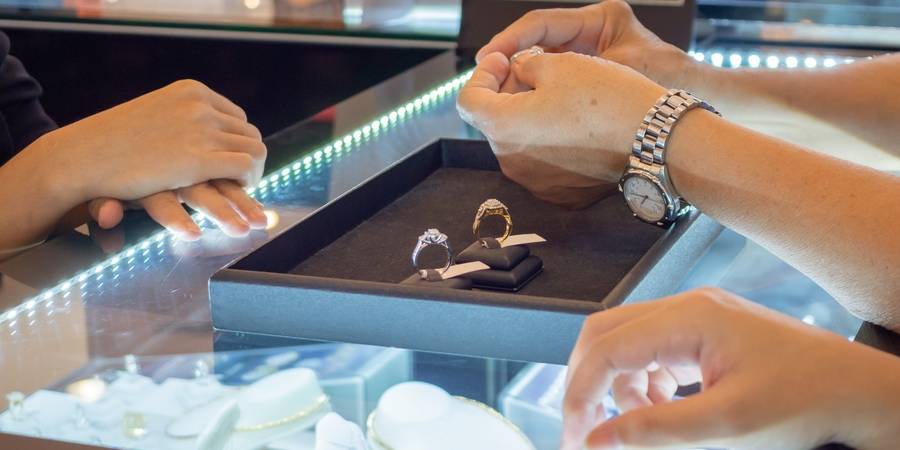
How Much Profit Do Jewelers Make On Diamonds?
The level of profit a jeweler can make from selling diamonds is influenced by the jeweler’s prominence in the industry.
Small jewelers have limited profit margins, as they need to sustain their business operations. On the contrary, renowned jewelers like Bulgari, Cartier, and Tiffany & Co. can invest in extensive marketing campaigns that enable them to profit significantly from diamonds.
A small jewelry store may apply a markup of 300% on a diamond. However, the crucial question is whether anyone would be willing to purchase it at that price. Local jewelers may not enjoy widespread popularity, which means high markups may not be advantageous for them.
The diamond may end up sitting idle at the store until the jeweler decides to offer it at a discounted price. Even then, there’s no guarantee of finding a buyer.
Therefore, it is more favorable for small jewelers to adopt a markup of around 160% or even lower. This way, they can attract a steady stream of customers, gradually build their reputation, and expand their small-scale business.
On the other hand, prominent jewelers with an established market presence can command higher markups. Even if they apply a markup of 1000% on a diamond, their effective marketing strategies ensure that there will be buyers.
Nevertheless, even well-known jewelers have their expenses to cover. The more profit they generate, the more they can expand. However, growth comes with its own costs.
While it is true that large retailers invest significant amounts in marketing campaigns, interior design, and prime locations, these factors can partly justify the markups on certain diamonds.
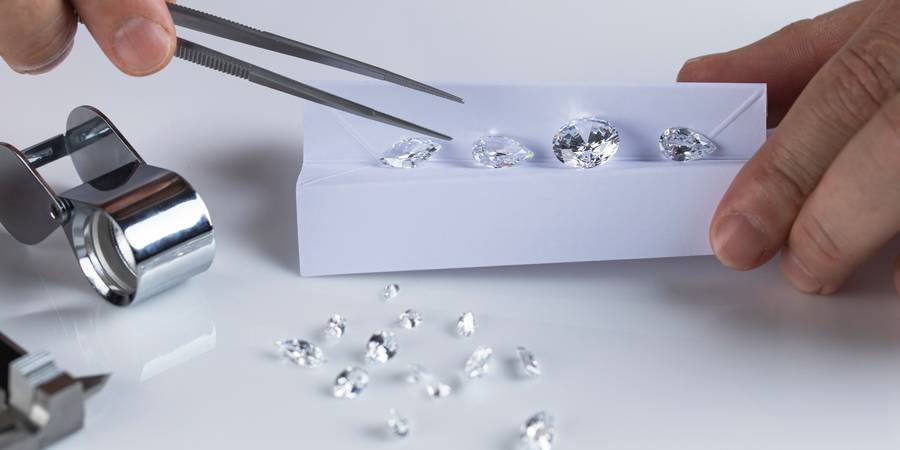
Buying Diamonds From A Retailer
Despite the higher markups on diamonds in retail stores, many people still choose to buy from them due to one key factor: excellent customer service.
Retail stores provide a level of professional and personalized service that wholesalers and online stores often lack. Customers can seek guidance and ask questions about the diamonds they are interested in, receiving informed answers from knowledgeable staff. This is particularly beneficial for those who have limited knowledge about diamonds and want to educate themselves before making a purchase. Retail stores also offer the convenience of browsing and considering options without feeling pressured to buy immediately, allowing customers to return at a later time.
Furthermore, retail stores typically offer flexible payment options, including cash, credit cards, deposits, layaways, and deferred payments, providing customers with greater financial flexibility. Additionally, diamonds purchased from retail stores usually come with warranties, guarantees, and certificates, offering customers protection and peace of mind in case of unexpected issues.
Return and exchange policies vary among retail stores, with some offering generous options. While buying from a retail store may come at a higher cost, it is often considered a safer option. It is recommended to explore smaller retailers and search for discounts if the brand is not the primary concern.
Are wholesalers a better alternative? Wholesalers are advantageous for those looking to purchase diamonds in large quantities tax-free. However, if you only need a single small diamond, it is unlikely to find it from a wholesaler. Wholesalers typically have markups ranging from 1% to 30%, and jewelry stores directly source their diamonds from wholesalers. Unless you have your own store or personal connections with wholesalers, this option may not be suitable.
As for online stores, the internet has made beautiful diamonds available at affordable prices. Online retail stores generally have slimmer markups, averaging around 20%. However, markups can vary between stores and may be influenced by the specific diamond setting. Online stores benefit from reduced expenses compared to traditional brick-and-mortar stores since they do not require physical showrooms or extensive staff. They simply order the diamonds from suppliers, who then ship the products directly to customers.
Due to the lower markups offered by online stores, they have gained popularity and are gradually posing a challenge to physical retail stores. In response, many traditional retailers have adjusted their pricing strategies, reducing their significant diamond markups and establishing their own online stores.
If the in-store shopping experience is not a priority, and cost savings are desired, purchasing diamonds from an online store is often the preferred choice.
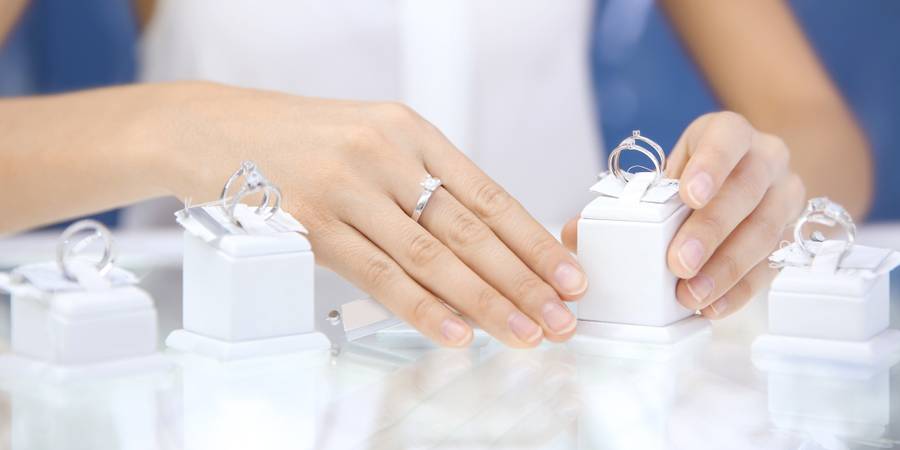
Conclusion
The markup on diamonds tends to be quite significant, with many retailers applying a markup of 300%, and renowned jewelers often going as high as an astonishing 1000%.
The reason behind such exorbitant markups lies in the widespread popularity of diamonds, particularly in settings like engagement rings. Retailers capitalize on the demand for these items, knowing that customers are willing to spend generously on them. By understanding the preferences for diamond shape, setting, and color, retailers can maximize their profits accordingly.
For those seeking more affordable options, online stores are often the best choice. Compared to physical retail stores, online retailers typically have much lower markups on diamonds, providing a more cost-effective solution.
We hope this information has given you a comprehensive understanding of diamond markups, why they tend to be so high, and where to find more budget-friendly options.


